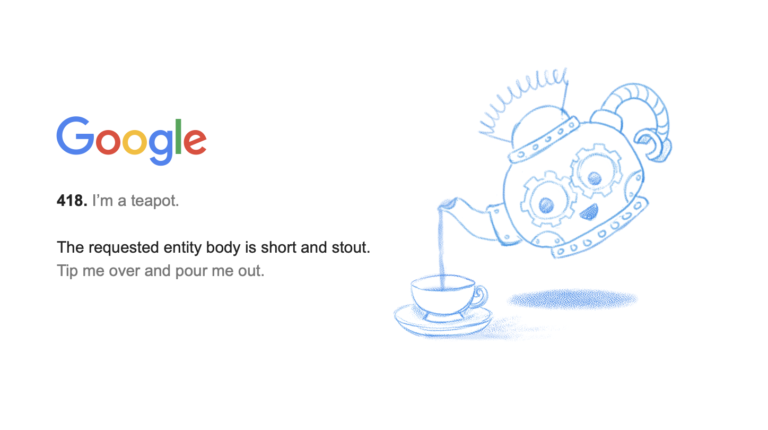
When it comes to HTTP status codes, most people are familiar with the common ones like 200 (OK), 404 (Not Found), or 500 (Internal Server Error). However, hidden within the vast array of status codes lies an intriguing and whimsical number: 418. In this article, we delve into the enigmatic world of HTTP status code 418, aptly named “I’m a Teapot.” We’ll explore its origins, significance, and the humor behind its existence.
The Unlikely Origins of HTTP 418 – An April Fools’ Joke Gone Wild
In the early days of the internet, April Fools’ Day became an occasion for developers to indulge in a bit of humor. In 1998, the Internet Engineering Task Force (IETF) introduced a playful addition to the HTTP protocol: status code 418. Inspired by the famous “I’m a teapot” skit from the British comedy show “Monty Python’s Flying Circus,” this status code was never intended to be taken seriously. However, its unintended legacy has persisted throughout the years.
The Meaning Behind HTTP 418 – A Tribute to Creativity and Whimsy
HTTP status code 418 serves as a reminder that the internet is not just a realm of serious business; it can also be a place for creativity and amusement. The code itself, when encountered, is accompanied by a response message: “I’m a teapot.” This message serves no practical purpose other than to elicit a chuckle and signal to developers that they have unwittingly stumbled upon a whimsical corner of the internet.
The Relevance of HTTP 418 in Web Development – Teapot as a Symbol of Impossibility
While HTTP status code 418 may seem entirely frivolous, it does have a practical side in the world of web development. By using this code, developers can highlight situations where an action requested by a client is not possible or cannot be fulfilled due to the limitations of the server or application. The teapot becomes a symbol of impossibility, reminding developers to handle such requests gracefully and provide appropriate error messages to users.
Legacy and Easter Eggs – The Persistence of HTTP 418
Over the years, HTTP status code 418 has gained a cult following and has become somewhat of an internet meme. Developers and web enthusiasts have embraced its whimsical nature, often referencing it in Easter eggs, hidden messages, and quirky applications. Websites and applications may occasionally return a 418 response code as an inside joke or as a way to inject a touch of humor into their user experience. It has become a symbol of the lighter side of web development and a testament to the spirit of creativity within the community.
Conclusion
HTTP status code 418, with its origins in a jest and its enduring presence on the internet, embodies the spirit of fun and creativity in web development. While its practical utility may be limited, it serves as a reminder that even in the realm of technology, a bit of whimsy can bring joy and amusement. So, the next time you encounter the elusive HTTP 418, take a moment to appreciate the teapot and the laughter it brings to an otherwise serious digital world.
For more insights from Datactics, find us on Linkedin, Twitter or Facebook.

